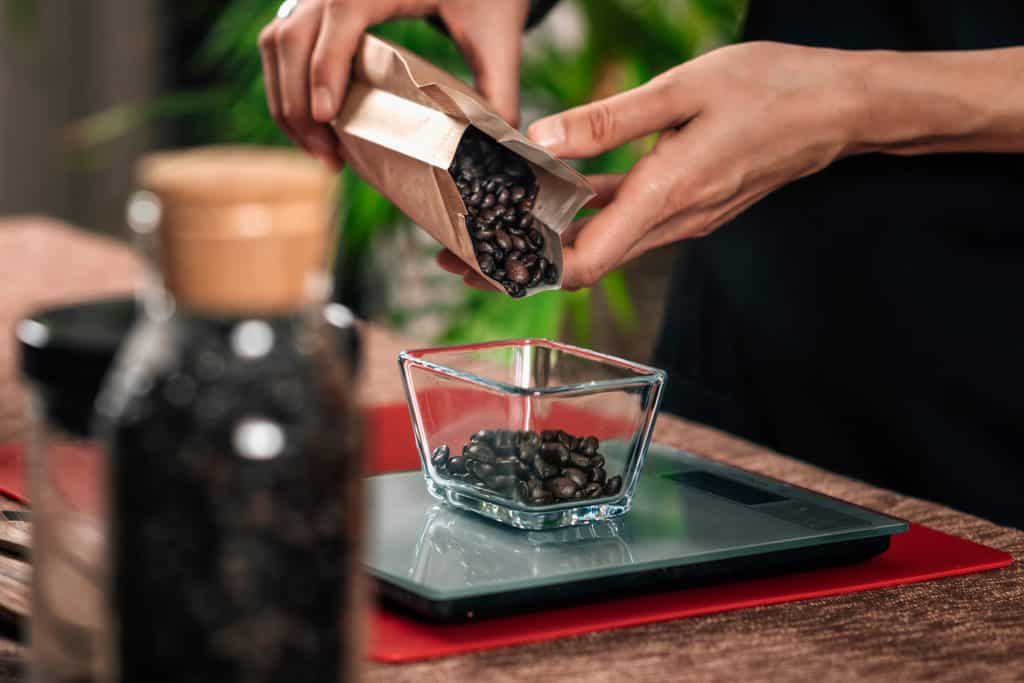
What is Single Origin Coffee?
I used to be quite confused about single origin, single estate, single farm, and specialty or micro-lot coffee. I see these words everywhere in coffee
Making great coffee is all about getting the coffee to water ratio right. But getting to that optimal mix of coffee and water isn’t always easy. I would even say it is really hard, and there is a lot of confusing and conflicting information out there.
With this article, I want to help you to figure out how to measure ground coffee to make that perfect cup of joe.
I will guide you through all the variables that matter and the steps you need to take to measure the correct amount of coffee.
Maybe you are not here for an in-depth exploration of perfect coffee measurement.
I understand.
Life is busy, and you need your caffeine fix.
If that’s you, let me give you a few pieces of advice:
1. Don’t trust your coffee scoop.
Coffee scoops are notoriously inaccurate. Very few manufacturers strictly adhere to the universal standard size. A coffee scoop should hold 2 tablespoons of coffee.
2. Acknowledge that measuring by volume is always a inaccurate.
A tablespoon of coffee beans weighs less than a tablespoon of ground coffee. And a tablespoon of coarse ground coffee weighs less than a tablespoon of finely ground coffee. Volume is a suboptimal measure if you want to be precise.
If you want to be precise: measure your coffee by weight.
Use 10 grams of coffee for every 6 fluid ounces (or 177ml) of water. That’s the golden ratio.

As said, finding out how much ground coffee or coffee beans you should use is determined by a few variables:
First, the cup size.
To determine how much ground coffee you need, you first need to determine how much coffee you want to make. When you make coffee by the cup (or mug), you need to figure out how large your cup or mug is. If you make coffee by the pot, figure out how much your drip coffee maker holds.
A standard sized coffee cup (which is the same size as a teacup) holds 6 oz or 177 milliliters of liquid. A standard size coffee mug will hold 8 or 9 oz or 236 or 266 milliliters of liquid. But be aware, coffee mugs come in a wide range of sizes, so make sure how much liquid your mug holds by testing it!
To find how much coffee you can fit in a cup or mug, simply test it by filling the mug with water (leave about a half-inch of headspace) and pour this into a measuring cup. Now you can simply read off the amount of coffee that fits your favorite cup.
Another method is to take a standard one cup sized measuring cup and fill it with water. Pour this in your favorite mug. Fill up the mug while keeping track of much (partial) cups you can fit in it.
Second, the grind size matters a lot if you measure by volume. Most people that measure their coffee by volume use a coffee scoop. While you might want to take some steps to make sure that your scoop is the right size (!! more on that later), a scoop probably the most convenient way to measure.
But the problem here is that if you use coarsely ground coffee beans, you will be using less coffee than when you are using finely ground coffee beans. Finely ground coffee beans pack tighter, so more coffee fits in your scoop.
Finally, the way you measure coffee is important. As said, a coffee scoop is very convenient, but it is also quite inaccurate. Not only because of the volume difference between coarsely ground and finely ground coffee beans but also because of inaccuracies in coffee scoop manufacturing (more on that below).
Let me make a case for measuring coffee by weight.
Measuring coffee by weight is the biggest step you can take towards being more precise. It is easy because you only have to remember a number (the weight). Every time you make coffee, you take a kitchen scale, weigh out the amount of coffee (beans, coarsely ground, espresso dust… it doesn’t matter), and put it in your coffee maker.
I know absolutely zero people who consider themselves coffee geeks that are not using a scale. Most of them weigh both the water and the amount of coffee!
But it is less convenient. If you don’t have a (digital!) kitchen scale, you’ll have to buy one. And every time you make coffee, you have to take it out and start the measuring process. It’s a couple of additional steps you have to take each time you make coffee.
So, there are pros and cons. But one thing is for sure: if you want to be precise about the amount of coffee you use, you have to weigh it.
Drip coffee makers come in a range of shapes and sizes. To figure out how much ground coffee you need to put in the filter basket for the optimal cup of coffee, you need to figure out how much water you put in.
Luckily, that is easy to figure out. Usually, on the side of the carafe, it says how many cups it will handle. The markings on the side will tell you whether you can make 8, 9, 10, or even 12 cups.
Drip coffee maker capacity ranges anywhere from 4 to 12 cups. The table below has an overview of the coffee maker capacity, and it shows how much ground coffee you should use.
Isn’t that convenient?
| Coffee maker size | Grams of coffee |
|---|---|
| 1 cup | 10 |
| 2 cups | 20 |
| 3 cups | 30 |
| 4 cups | 40 |
| 5 cups | 50 |
| 6 cups | 60 |
| 7 cups | 70 |
| 8 cups | 80 |
| 9 cups | 90 |
| 10 cups | 100 |
| 11 cups | 110 |
| 12 cups | 120 |
Use this table as a starting point. How much coffee you should use is, as we’ve mentioned before, a matter of taste. In my opinion, this simple, easy to remember overview is a great place to start. Try it once or twice and then start adjusting the recipe.
You feel the coffee isn’t strong enough? Add 5 to 10 grams of coffee on a full pot.
Too strong? Put in 5 to 10 grams less coffee on a full pot.
As said in the introduction, the coffee scoop is not as standardized as you might think. Or at least the manufacturers of coffee scoops don’t make the coffee scoops to the standard specifications.
A coffee scoop should hold precisely two standardized tablespoons of ground coffee. To determine whether your coffee scoop is the right size, you should take out your measuring spoons. Put two tablespoons of ground coffee in the coffee scoop and level it out. If it fits exactly, it is the right size. If it isn’t, ditch it!
If you want to measure by volume (instead of by weight), you are better off using a tablespoon than a coffee scoop that isn’t the right size. Simply double the number of spoons you add to the filter.
Final tip: don’t worry too much about being precise.
Wait! What?
First, you tell me to ditch my inaccurate coffee coop and weigh my coffee beans, and then you say: don’t worry too much about being precise? What’s up with that?
Let me explain.
I believe it is extremely valuable to know the detail of what makes great coffee. You should know about the coffee to water ratio. And you should know that a coffee scoop is not as standard as you might think.
But I also believe that if you add 1 gram more (or less) than what would be perfect according to your desired coffee to water ratio, you won’t notice. So, it’s a matter of knowing the rules and then letting go.
Do what works for you.
If being precise makes you comfortable: use scales and do your thing.
If you are OK with losing a bit of precision in favor of convenience: check your scoop once to make sure that it is the size of two tablespoons, and use it as you would.
As long as the coffee you make is the way you like it, all is good.
For me, it depends on how Zen I feel. Some days it’s geeking out on the scales and get it EXACTLY on 29.3 grams; other days, I literally throw in a scoop or two and hit the power button.
MonsieurCoffee.com is a participant in the Amazon Services LLC Associates Program, an affiliate advertising program designed to provide a means for sites to earn advertising fees by advertising and linking to Amazon.com. We earn small commissions on purchase made through links on this site, at no extra costs to you.

I used to be quite confused about single origin, single estate, single farm, and specialty or micro-lot coffee. I see these words everywhere in coffee

Over the years, Starbucks has become the most successful coffee shop in the world. It has over 32,000 stores worldwide, more than 15,000 in the

Roasting your own coffee beans is the next level in making great coffee at home. Of course, to do this, you’ll need the best home

The perfect start of the day involves a good cup of coffee for most people. I know it does for me! But if the coffee